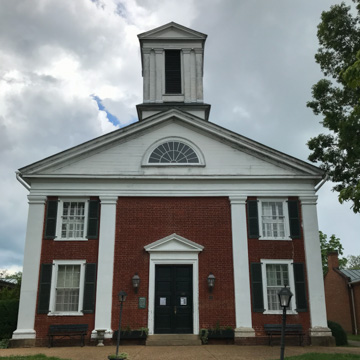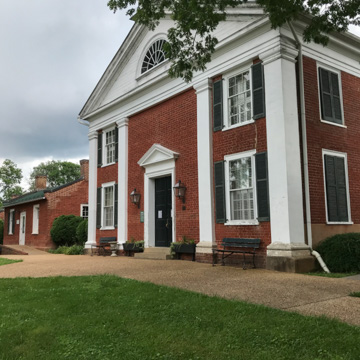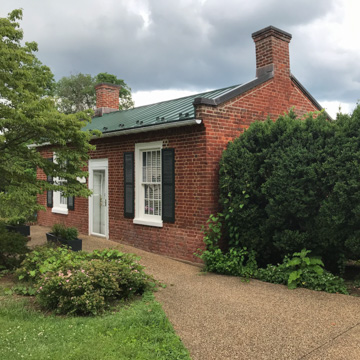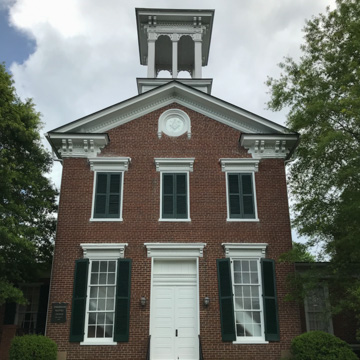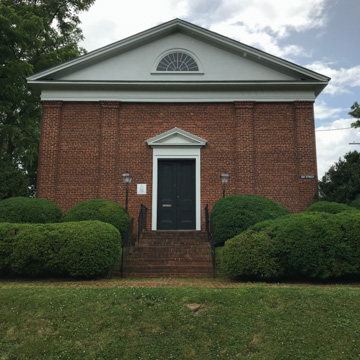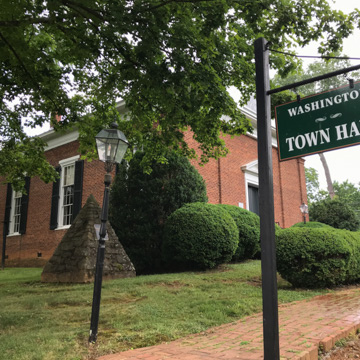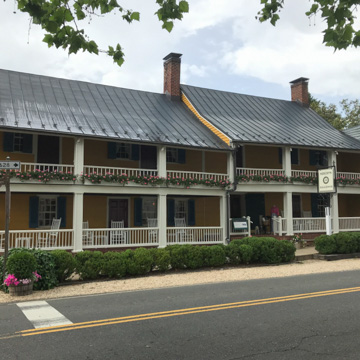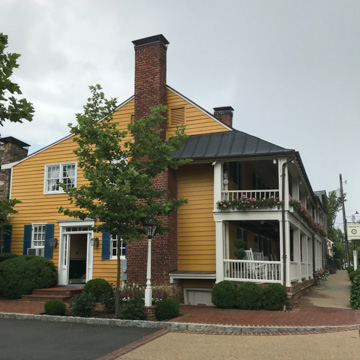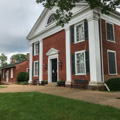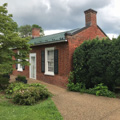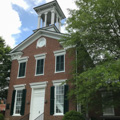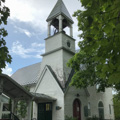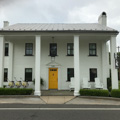George Washington, in company with John Lonem and Edward Corder, platted the town in 1749 on a grid plan with two main north–south streets—present-day Main and Gay—and five cross streets—present-day Wheeler, Calvert, Middle, Jett, and Porter. The town was incorporated in 1796, at which time it received its present name. It became the county seat in 1833 when Rappahannock County was partitioned off from Culpeper. U.S. 522 and U.S. 211 bypass the town. It still retains its nineteenth-century rural character, with numerous wooden dwellings in a regional vernacular and several more pretentious structures. In recent years it has become a tourist and gourmet destination and has suffered the usual boutique-ization. Important buildings include the Rappahannock County Courthouse (1834, Malcolm Crawford; Gay Street), located near the highest point in the town, designed in the Jeffersonian courthouse tradition by one of the workmen, or “undertakers,” from the University of Virginia project. The low budget of $4,500 precluded the typical portico, and Crawford provided white-painted brick Tuscan pilasters, a lunette window, a full wooden entablature, and a belfry. On the Court Green is a cluster of mid-nineteenth-century county government buildings, including the jail (c. 1850) and offices for lawyers, the clerk, and the treasurer. The treasurer's office has a raised end parapet similar to that at Ben Venue nearby. The courthouse is the nucleus of the small business district on Gay Street, which includes the substantial brick Italianate Washington Baptist Church and Masonic Hall (1873; Gay Street) and the Greek Revival Town Hall (originally the Presbyterian Church) (1858, attributed to James Leake Powers; Gay Street), a single-story brick structure with pilasters. Another notable building is the Italianate Trinity Episcopal Church (1852, attributed to James Leake Powers; Gay Street), which has been altered and stuccoed. Powers may have worked for Jefferson at the university and come to town with Crawford. On Main Street is the Washington House Tavern (originally Coxes Hotel) (c. 1820, later additions; 411 Main Street). It is a rambling affair with the typical two-story front porch. The Henry Johnson House (Heritage House) (1837; 291 Main Street) is a single-pile, two-story house, large for its time, with a columnar front added later.
You are here
Washington
If SAH Archipedia has been useful to you, please consider supporting it.
SAH Archipedia tells the story of the United States through its buildings, landscapes, and cities. This freely available resource empowers the public with authoritative knowledge that deepens their understanding and appreciation of the built environment. But the Society of Architectural Historians, which created SAH Archipedia with University of Virginia Press, needs your support to maintain the high-caliber research, writing, photography, cartography, editing, design, and programming that make SAH Archipedia a trusted online resource available to all who value the history of place, heritage tourism, and learning.




















